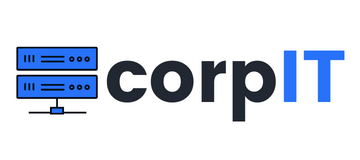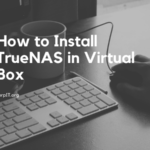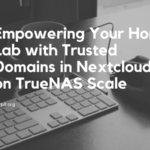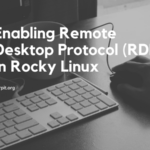The world of technology is constantly evolving, and for organizations, keeping up with these changes can be a daunting task. One of the biggest shifts in recent years has been the move from on-premises infrastructure to multi-cloud environments. This transition offers a number of benefits, including increased scalability, flexibility, and cost savings.
A multi-cloud strategy allows organizations to take advantage of the unique strengths of different cloud providers, such as specialized services or geographic locations. This approach also helps to mitigate the risks associated with relying on a single provider.
In this guide, we will walk you through the key steps involved in moving from on-premises to multi-cloud. We will cover everything from assessing and planning your migration to implementing security and compliance measures, and training staff on the new systems. By following these steps, your organization can make a seamless transition to a multi-cloud environment, reaping the benefits of this powerful technology.
Table of Contents
Assessment and Planning
The first step in moving from on-premises to multi-cloud is to conduct a thorough assessment of your current infrastructure and workloads. This will help you to identify which applications and services are suitable for the cloud and which should remain on-premises.

When identifying which workloads are suitable for the cloud, it is important to consider factors such as scalability, security, and compliance. For example, workloads that require high levels of customization or that handle sensitive data may be better suited to remaining on-premises.
Once you have a clear understanding of which workloads are suitable for the cloud, the next step is to develop a migration plan. This plan should include a detailed timeline for the migration, a list of resources that will be needed, and an identification of any potential challenges that may arise. A clear migration plan will help ensure that the transition is as smooth as possible, minimizing disruptions to your organization’s operations.
Finally, it is important to establish a budget for the migration. This will help you to identify any potential cost savings or areas where additional investment may be required. It is important to remember that moving to a multi-cloud environment can be a significant undertaking and that it is important to have a clear understanding of the costs involved.
By identifying which workloads are suitable for the cloud, developing a clear migration plan, and establishing a budget, organizations can ensure that their transition to multi-cloud is well-planned and executed. This will help to minimize disruptions and ensure that the organization is able to take full advantage of the benefits of multi-cloud.
Choosing the Right Cloud Providers
Once you have assessed your workloads and developed a migration plan, the next step is to choose the right cloud providers. This involves evaluating the different options available, including public and private cloud providers, and identifying the right mix that best meets your organization’s needs.

When evaluating different options, it is important to consider factors such as scalability, security, compliance, and cost. Each cloud provider has its own set of features and capabilities, and it is important to choose providers that align with your organization’s specific needs.
One of the key advantages of multi-cloud is the ability to take advantage of the strengths of different providers. For example, you may choose to use a public cloud provider for its scalability and cost-efficiency, while using a private cloud provider for its security and compliance features.
Once you have identified the right mix of public and private cloud providers, the next step is to sign service level agreements (SLAs). SLAs are legally binding agreements that outline the level of service that a provider will deliver and the remedies that will be provided in the event of a service failure. It is important to review SLAs carefully to ensure that they meet your organization’s needs.
By evaluating different options, identifying the right mix of public and private cloud providers, and signing service level agreements, organizations can ensure that they choose the best providers to meet their specific needs. This will help to ensure that the organization is able to take full advantage of the benefits of multi-cloud.
Security and Compliance
As organizations move from on-premises to multi-cloud environments, it is crucial to implement robust security and compliance measures to protect sensitive data. This includes implementing security measures to protect against data breaches, ensuring compliance with relevant regulations and setting up incident response and disaster recovery plans.

To protect sensitive data, organizations should consider implementing security measures such as encryption, multi-factor authentication, and network segmentation. It’s also important to have a clear understanding of the security capabilities offered by different cloud providers and to choose providers that align with your organization’s specific security needs.
Ensuring compliance with relevant regulations is another important aspect of multi-cloud security. Different cloud providers may have different compliance certifications, so it’s important to choose providers that align with your organization’s specific compliance requirements.
Incident response and disaster recovery plans are also important to have in place. These plans should outline the steps that will be taken in the event of a security incident or disaster. This includes identifying potential risks, creating response procedures and testing the plan to ensure its effectiveness.
By implementing security measures to protect sensitive data, ensuring compliance with relevant regulations and setting up incident response and disaster recovery plans, organizations can ensure that their multi-cloud environment is secure and compliant. This will help to protect the organization’s sensitive data and minimize the risk of a security incident or disaster.
Deployment and Management
Once the necessary security and compliance measures have been put in place, the next step is to deploy the infrastructure and migrate workloads to the new multi-cloud environment. This includes setting up the necessary infrastructure, configuring the various cloud providers and migrating existing workloads to the new environment.

Once the infrastructure is set up and the workloads are migrated, it is important to closely monitor and manage the multi-cloud environment. This includes monitoring performance, managing capacity, and identifying and addressing any issues that arise.
Automation and orchestration are key to managing a multi-cloud environment effectively. Automation can help to reduce the time and effort required to manage the environment, while orchestration can help to ensure that all of the different cloud providers are working together seamlessly. Automation and orchestration tools can help to automate common tasks such as scaling, backups, and failover, helping to minimize disruptions and ensure that the organization is able to take full advantage of the benefits of multi-cloud.
By setting up the infrastructure, migrating workloads and closely monitoring and managing the multi-cloud environment, organizations can ensure that their multi-cloud environment is running smoothly and efficiently. This will help to minimize disruptions and ensure that the organization is able to take full advantage of the benefits of multi-cloud.
Training and Optimization
As your organization transitions to a multi-cloud environment, it is important to ensure that staff are properly trained on the new systems and procedures. This includes providing training on the new infrastructure, the different cloud providers, and the procedures for managing and monitoring the multi-cloud environment.

It is also important to continuously monitor and optimize the multi-cloud environment for cost efficiency and scalability. This includes monitoring costs and usage, identifying areas where costs can be reduced, and ensuring that the environment is scaled appropriately to meet changing demand.
To ensure the best outcome, it’s important to follow best practices for multi-cloud management, this includes:
- Adopting a multi-cloud management platform
- Establishing standardization and governance
- Continuously monitoring and optimizing for cost efficiency and scalability
- Incorporating automation and orchestration
- Managing and monitoring the multi-cloud environment
- Planning for disaster recovery and incident response
By providing training to staff, continuously monitoring and optimizing for cost efficiency and scalability and following best practices for multi-cloud management, organizations can ensure that their multi-cloud environment is running smoothly, efficiently, and cost-effectively. This will help to minimize disruptions, ensure that the organization is able to take full advantage of the benefits of multi-cloud, and set up for long-term success.
Conclusion
In conclusion, moving from on-premises to multi-cloud is a significant undertaking that requires careful planning and execution. By following the steps outlined in this guide, organizations can ensure that their transition to multi-cloud is smooth and successful.
The key takeaways from this guide include:
- Assessing current infrastructure and workloads to determine which are suitable for the cloud and which should remain on-premises.
- Developing a clear migration plan that outlines the timeline, resources needed, and potential challenges.
- Identifying the right mix of public and private cloud providers that best meet the organization’s needs and budget.
- Implementing security and compliance measures to ensure sensitive data is protected in the cloud.
- Establishing a process for monitoring and managing the multi-cloud environment to ensure it is running smoothly and efficiently.
- Training staff on the new systems and procedures.
- Continuously monitoring and optimizing for cost efficiency and scalability.
As organizations continue to adopt multi-cloud, it is important to keep in mind that this is an ongoing process that requires continuous monitoring, optimization, and adaptation. Organizations should be prepared to evaluate and adjust their multi-cloud strategy as needed to ensure it aligns with the business objectives and adapts to the changing technology landscape.
In the future, organizations will likely see an increased emphasis on multi-cloud governance and management to ensure security, compliance and cost efficiency. As the technology continues to evolve, organizations need to stay informed about the latest developments and adjust their multi-cloud strategy accordingly.
FAQ
What are the benefits of moving from on-premises to multi-cloud?
Moving from on-premises to multi-cloud can provide a number of benefits, including increased scalability, flexibility, and cost savings. A multi-cloud strategy allows organizations to take advantage of the unique strengths of different cloud providers, such as specialized services or geographic locations. This approach also helps to mitigate the risks associated with relying on a single provider.
How can I determine which workloads are suitable for the cloud?
When identifying which workloads are suitable for the cloud, it is important to consider factors such as scalability, security, and compliance. For example, workloads that require high levels of customization or that handle sensitive data may be better suited to remaining on-premises.
How do I choose the right mix of cloud providers?
When choosing the right mix of cloud providers, it is important to consider factors such as scalability, security, compliance, and cost. Each cloud provider has its own set of features and capabilities, and it is important to choose providers that align with your organization’s specific needs.
How can I ensure my multi-cloud environment is secure and compliant?
To ensure that your multi-cloud environment is secure and compliant, it is important to implement robust security and compliance measures. This includes implementing security measures to protect against data breaches, ensuring compliance with relevant regulations and setting up incident response and disaster recovery plans.
How do I monitor and manage my multi-cloud environment?
To monitor and manage your multi-cloud environment, it is important to closely monitor performance, manage capacity, and identify and address any issues that arise. Automation and orchestration are key to managing a multi-cloud environment effectively. Automation can help to reduce the time and effort required to manage the environment, while orchestration can help to ensure that all of the different cloud providers are working together seamlessly.




